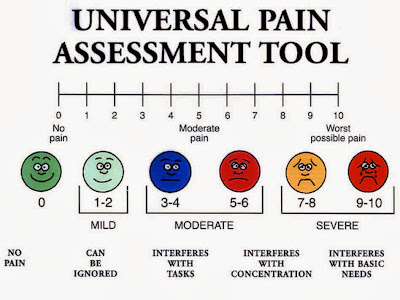Reminiscent of Confucius or one of Yogi Berra's infamous isms, this quote offers us wisdom beyond just simple word play. In the case of system performance, especially when thinking about a particularly complex system such as U.S. health care, the above statement provides us with insight to explain why we're getting the results we're getting (which as we saw, in begging the question of "...How m'I Doing??", are not all that great) - and it isn't by happenstance. Rather the opposite, our health care system can be thought of as being finely tuned to get the results it's getting. The "tuning" in this case could come in the form of efforts to reform health care, but it need not be so deliberate, as our system of health is constantly having its dials turned by a countless number of shifts in processes that directly or indirectly link to our health. To help us get a handle on what matters in the world of health and what doesn't, health experts have created the term "determinants of health" to capture this comprehensive network of interactions associated with our health.
If you haven't already done so, before looking closely at the contents of the image below, try to come up with as many factors of health as you can on your own (write them all down if you'd like!) - after we'll gauge how closely our intuitive senses match the real thing.
As we see depicted in the above diagram, there's much more to our health than what we traditionally might have thought. "Health care", which receives an overwhelming majority of the funding for health matters in the U.S. (upwards of 90% of the $2.6 trillion dollars spent on health annually), comprises only one piece of the schematic's hemispherical puzzle. The rest of the amphitheater is occupied by our genetics, behavior, social environment and physical environment as well as interventions made on the part of society to promote or deter healthy living, much of which are the subjects of our attention in public health (which mind you, gets less than 5% of our financial attention in the form of funding). When we think about making changes to our system of health, we're going to need to think big picture about how any number of these factors could have an effect on our health outcomes.
Continuing on this matter, we find that significant improvements to our system of health tend not to arise spontaneously. A principle from the field of system performance sums up this notion succinctly in stating that "change can happen without improvement, but improvement cannot happen without change". A two-liner of which even JFK would be proud, and, I imagine, not just for its rhetoric, as we are able to unearth from it the concept that improvement never arrives unaccompanied by intervention (otherwise known on this blog as a "wedge"!). While observing properties of the natural world some centuries ago, Isaac Newton was coming around to a similar realization that culminated in his monumental laws of motion, which still stand true. Following a similar rhyme to the aforementioned adage of systems, his first law states that "an object at rest will stay at rest and an object in motion will stay in motion at a constant velocity, unless acted on by an external force." A concept cutting across historical and disciplinary divides has retained its relevance from the founding of classical physics all the way to the health care reform efforts of today.
Since we've seen that the U.S. healthcare system has significant room for improvement across the board (with a few exceptions like emergency care), we're now left with devising a means to change our ways as we've come to the realization that business as usual, i.e. no change, will not cut it. So what will we do? At present, much of our answer to this question can be found in the federal legislation as key decisions regarding domestic healthcare reform have already been drafted into law with the passing of the Affordable Care Act in 2010 - so at this time, the more appropriate question then, is not what are the changes that we are looking to make, but instead, HOW will we make them and WHO will be responsible or held accountable for carrying them out?
*Yearning for further coverage on how Congress came to the "what"? Refer to the perspectives offered in "Massachusetts: America's Next Top Model...".
 |
| "Who Accountable???", the healthcare reform spin-off of the classic "Who Done It??" |
Are you ready to give it a whirl??





